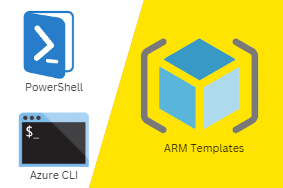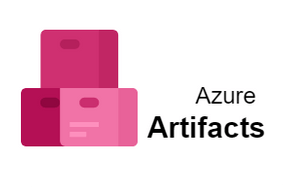Cloud Profiler, or Cloud Profiler for short, is an application program interface (API) available on Google Cloud Platform (GCP). It allows developers to identify problems within their applications, such as security vulnerabilities and poor performance issues, that are caused by GCP resources. In addition to identifying the issues and sending notifications about them to the appropriate developers or system operators, Cloud Profiler also offers suggestions to resolve them. In this article, we’ll take a look at Cloud Profiler and discuss how it works and what some of its most useful features are. Let’s get started!
Types of App Instances – App Engine vs. Managed VMs vs. Custom VM
Each type of instance has different characteristics that make it more suitable for certain kinds of applications. The following sections discuss each type in detail, as well as what you might use them for. Note: You can also choose to upload your own custom image, or use a third-party platform like Heroku, OpenShift, Azure, or Kubernetes with Google Container Engine. . GCP offers many tools for evaluating how efficiently your application uses resources. The first is Project Console’s new ability to generate reports on CPU and memory usage over time (Figure 3). Clicking these links takes you directly to an interactive report that shows usage levels over time—it even offers suggestions on where your applications might benefit from optimization. Figure 3. Use Project Console’s new resource monitoring features to determine if improvements are needed By default, one hour of statistics are collected before every collection cycle occurs; however, you can modify this setting based on how often information needs to be updated in order for specific tasks to occur within a reasonable timeframe.
Considerations for Microservices Architecture on GCP
When you choose a microservices architecture, you’re separating functionality into small, modular pieces that can be deployed as needed to meet scaling requirements. Depending on how your architecture is implemented, there are multiple considerations you should keep in mind. In particular, these considerations may apply if you plan to deploy your application on GCP: • Service isolation – Keep services separate both within your application stack (i.e., don’t run them all together on one node) and within individual environments or servers (i.e., keep services running on their own instance types). This will help ensure that failing services don’t impact other services unnecessarily. • Load balancing – If a single service fails and becomes unavailable, it may have an effect on dependent services—but only when requests for those dependent services would go directly to it. That said, deploying your applications such that each service runs its own load balancer ensures independence from failure of other parts of your architecture, isolating failures from upstream dependencies in much the same way as service-level redundancy does within a single server environment. You could use global load balancing instead; however, bear in mind that global load balancing routes traffic by HTTP port number rather than by URL hostname. Consequently, remember to configure your hostname route lists correctly so they reflect any new HTTP port numbers assigned to services after global load balancing has been configured and live traffic has begun routing through it.
Infrastructure as Code with Terraform
In 2013, HashiCorp created a tool to programmatically deploy and manage infrastructures on Amazon Web Services. This was a major turning point for AWS as Terraform allowed organizations to easily handle dozens of AWS accounts at once without having to worry about provisioning each instance manually. While Terraform can work with other cloud platforms such as Google Cloud, it’s most commonly used in conjunction with AWS. Since its initial launch, HashiCorp has continually updated Terraform with new features and is currently working on creating an open-source version of Google’s Kubernetes container service, called Kops. The team also maintains a list of community resources that provide detailed information about deploying applications with infrastructure as code. If you want to experiment with automating your own servers or simply better understand how businesses are leveraging IaaS technology, try out Terraform today!
Deploying Codes in Gitlab Repositories
Whenever any code modification is done, we use a special directory named Git for implementing codes. Once we push it from our local system to Gitlab repository on Cloud profiler than its automatically deployed in associated server(s). It checks whether new changes are required or not by comparing local system with server codes. If yes, it implements automatically into that particular server. But if there is no need of new changes then it reverts back to last saved version as per case. This is an easy way for implementing configurations in every server without manually performing deployment operations every time.
Continuous Integration/Continuous Delivery with CircleCI
Continuous Integration (CI) is a software development practice that requires developers to integrate code into a shared repository several times a day. Each check-in is then verified by an automated build, allowing teams to detect problems early. This can dramatically reduce integration issues, set you up for more continuous deployment capabilities down the road, and generally improve team productivity. This cloud-based integrated tool allows companies to focus on shipping features instead of writing unit tests, speeding time to market. The CircleCI platform uses Jenkins open source project so that you can install it on your infrastructure or use CircleCode private cloud hosted solution instead.
Securing your Applications with Google Cloud Identity-Aware Proxy (IAP)
GCP’s proxy service, called Google Cloud Identity-Aware Proxy (IAP), is a cloud security control that transparently adds fine-grained access controls to existing web applications. IAP makes it easy to enforce your application’s security policy at scale without requiring code changes or custom configuration management by using Google Authentication credentials. It also provides advanced monitoring capabilities with metrics from Google App Engine and Stackdriver. For example, you can quickly see usage trends across your GCP projects in a single dashboard, making it easier to detect anomalous behavior.
Application Logging with Stackdriver Logging
Application logging is a crucial component of any application’s architecture. The Application Performance Monitoring with Stackdriver Logging option provides comprehensive application monitoring by taking advantage of Google’s core infrastructure: our state-of-the-art datacenters, world-class networking, and availability solutions like Virtual IP addresses. Using logs from your application environment with Stackdriver Logging can allow you to pinpoint performance issues before they impact your users by making it easy to trace transactions through your entire stack. On top of that, you can use features like automatic rollup and correlated logs to remove boilerplate code in your app. This makes for streamlined error diagnosis down to a few lines that ensure fast resolution and pinpointing of problems.



0 Comments